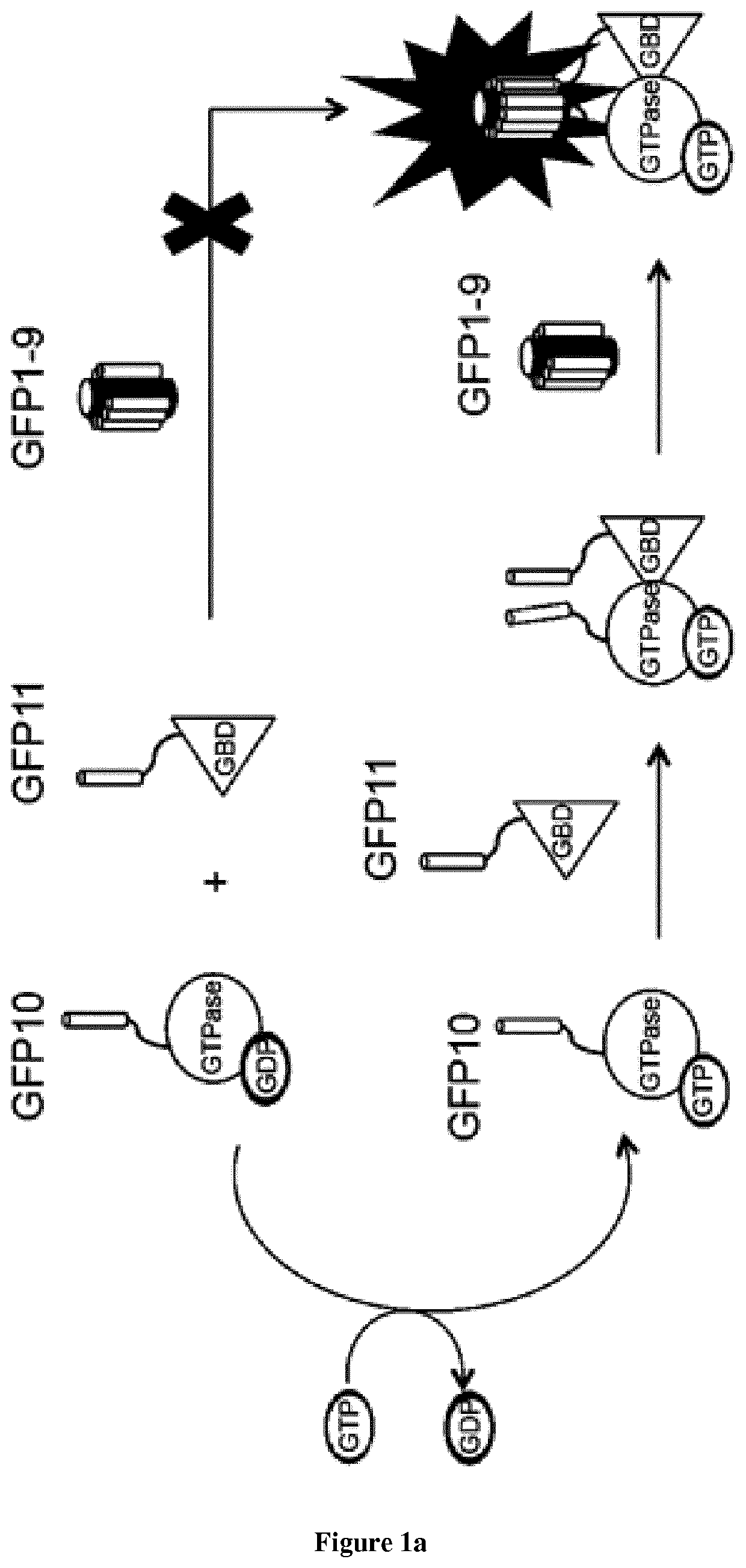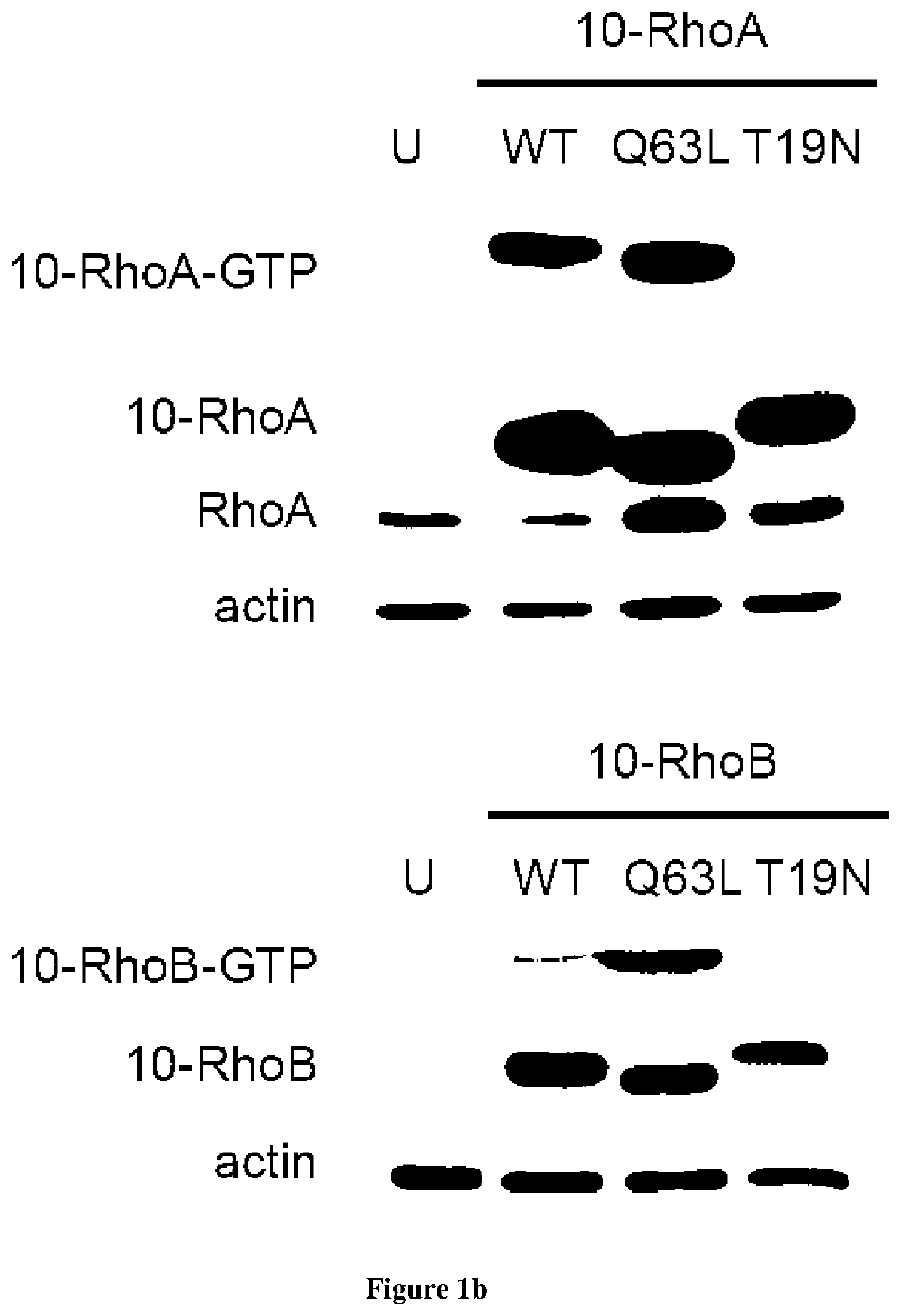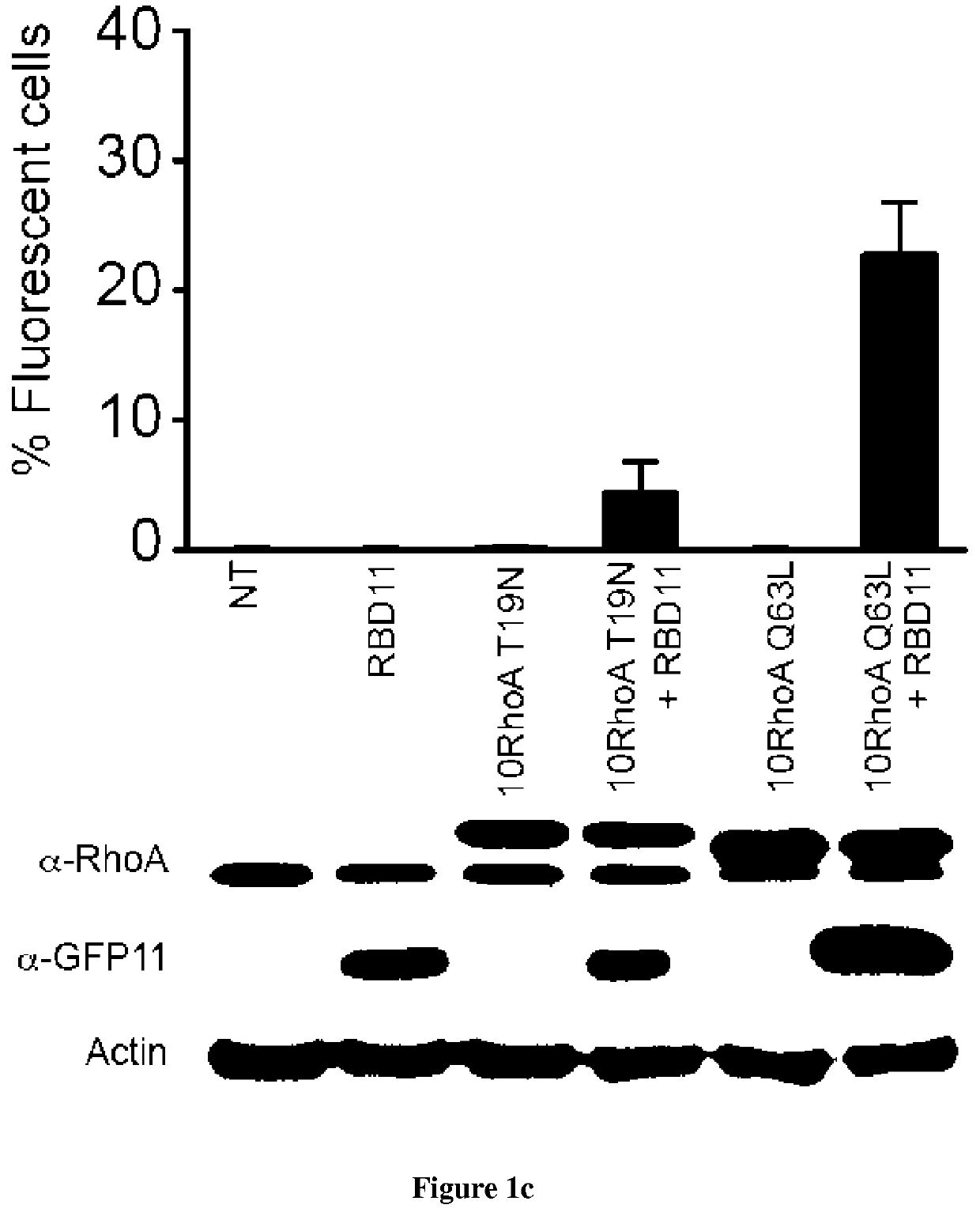Methods for detecting protein-protein interactions
a protein-protein interaction and kit technology, applied in the field of protein-protein interaction detection kits, can solve the problems of lack of resolution for imaging subcellular structures, and the scheme confers a great potential for false positive interactions
- Summary
- Abstract
- Description
- Claims
- Application Information
AI Technical Summary
Benefits of technology
Problems solved by technology
Method used
Image
Examples
example
[0090]Introduction:
[0091]Small GTPases play an important role in signal transduction via transmembrane receptors to drive cytoplasmic or nuclear responses. They are involved in various fundamental cellular processes ranking from cytoskeleton organization to cell migration, and therefore are compelling pharmacological targets. The human Ras superfamily consists of 154 members divided in five main families: Ras, Rho, Rab, Arf and Ran. The Ras family is composed of three members H-Ras, K-Ras and N-Ras that are very closely related, with 85% amino acid sequence identity. Rho family proteins regroup small GTPases that contain a conserved Rho insert domain in the GTPase domain16. The leader members in the Rho subfamilies are RhoA, Rac1 and Cdc42 GTPases. Ras and Rho GTPases are molecular switches that cycle between GTP and GDP bound states. The activation state of Ras and Rho proteins depends on whether they are bound to GTP (active) or GDP (inactive). Binding to GTP is promoted by Rho Gu...
PUM
| Property | Measurement | Unit |
|---|---|---|
| concentrations | aaaaa | aaaaa |
| fluorescence | aaaaa | aaaaa |
| fluorescent | aaaaa | aaaaa |
Abstract
Description
Claims
Application Information
 Login to View More
Login to View More - R&D
- Intellectual Property
- Life Sciences
- Materials
- Tech Scout
- Unparalleled Data Quality
- Higher Quality Content
- 60% Fewer Hallucinations
Browse by: Latest US Patents, China's latest patents, Technical Efficacy Thesaurus, Application Domain, Technology Topic, Popular Technical Reports.
© 2025 PatSnap. All rights reserved.Legal|Privacy policy|Modern Slavery Act Transparency Statement|Sitemap|About US| Contact US: help@patsnap.com



